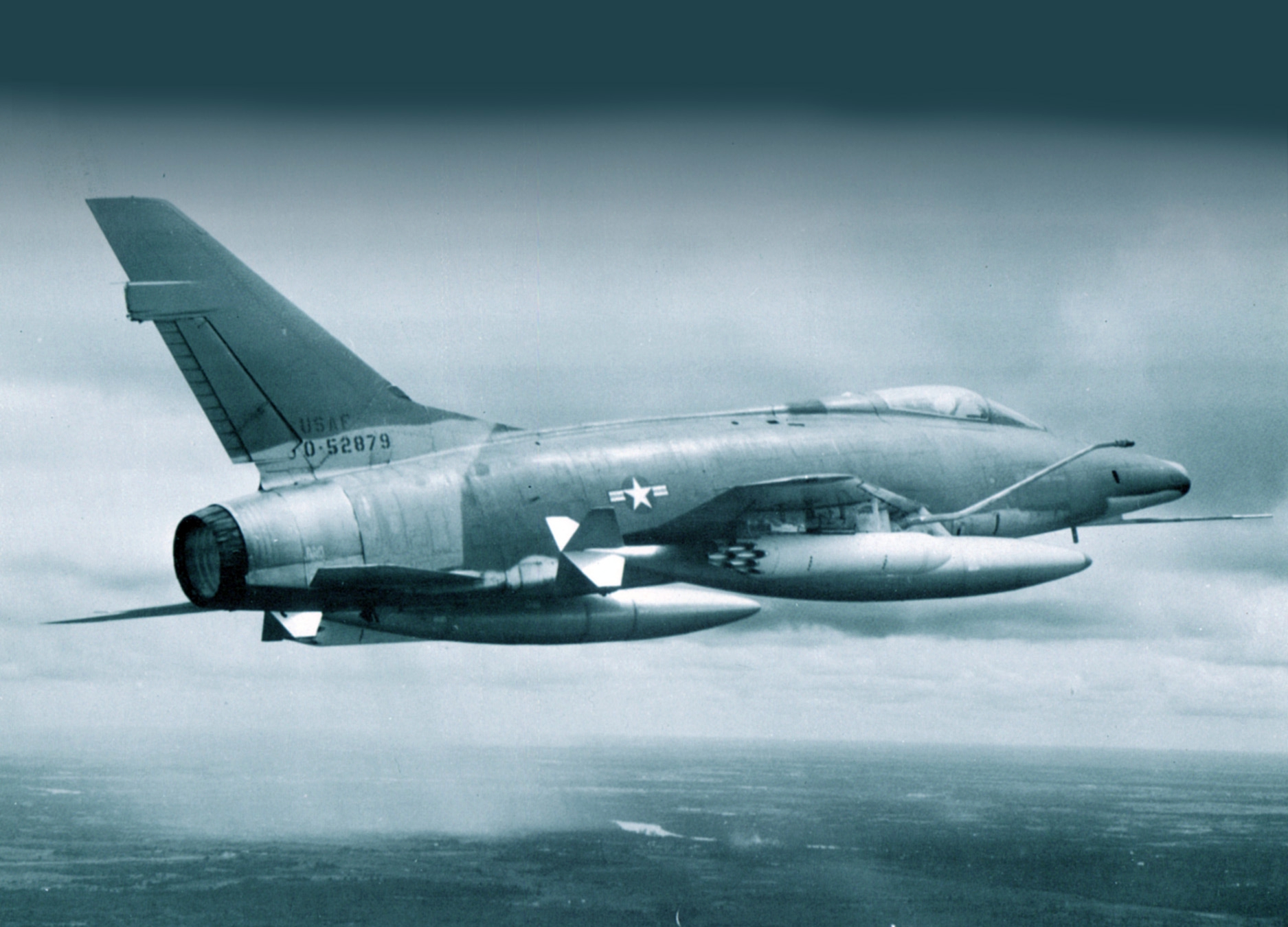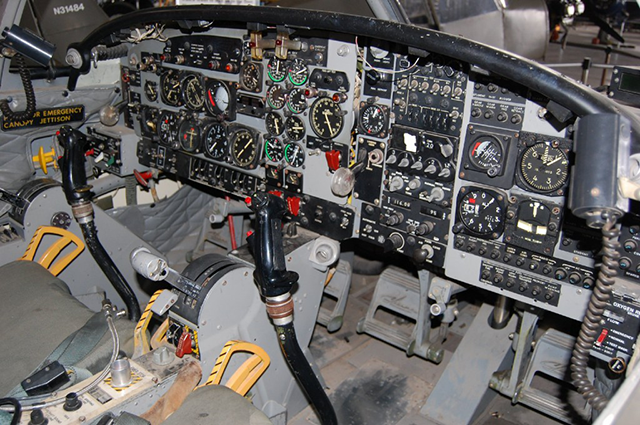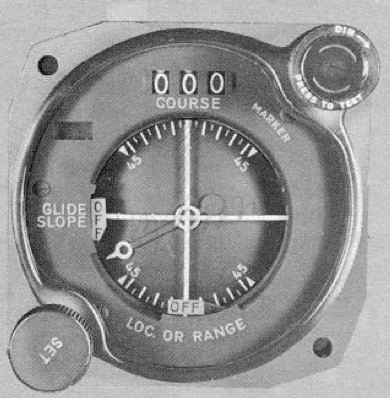I tend to compartmentalize every aspect of my life and have done so for most of my life. Given that statement, you might assume that I am a recluse who shuts out the world and forsakes outside relationships and experiences. Perhaps you might think that I am hyper-organized and analytical, and that I tend to focus heavily on whatever it is that interests me in the moment. Or, perhaps, a combination of the two extremes.
— James Albright

Updated:
2022-01-01
I don’t know a lot of people who share my compartmentalization tendencies but most who do, are aviators. Whether or not you tend to compartmentalize, I think the ability to section off parts of your life can make you safer in the air as well as happier on the ground. To understand why, you need to consider the origin of the term in the context of Air Force and Navy fighter pilot history.

1
Early studies
Imagine yourself flying a state-of-the-art fighter, like the North American F-100 Super Sabre, in an era where aircraft are unpredictable and safety margins are as thin as the wings on the jet. The F-100, for example suffered 6 major accidents in its first three months of operational service, mostly due to flight instability and structural failures. Another 41 aircraft were lost in major accidents over the next three years. Aircraft like the F-100 were unforgiving of mistakes and demanded pilots stay focused from the moment they “strapped on” the aircraft to the moment they walked away.
The Navy also had aircraft which became known as “widow makers” by its pilots, even some that rivaled the high crash rate of the Air Force’s “century series” fighters. Both services struggled to understand the human factors behind pilots who failed to measure up to the exacting demands of the job. Studies showed that crewmembers suffering seemingly minor problems could be distracted to the point they became major disasters.
Air Force and Navy psychologist coined the term “failing aviator” to identify fliers who struggled to cope with environmental stressors. The stressors were placed into four general groups: personal, family, social, and work related. Personal stress includes personality traits found in many aviators, such as extroversion and the need to always be in control. Family pressures range from an illness of a spouse or child to conflicts among family members. Social stressors include financial and moral pressures. Work related problems include career competition, difficulty with the boss, and overwork.
I was introduced to the failing aviator concept by a video-taped presentation in the early 1980s given by Frank Dully, MD, Commander (later promoted to Captain), USN. His study, conducted with the help of Air Force and Navy psychologists, revealed that typical military aviators need to always be in control and tend to be mission-oriented compartmentalizers. We all had a "flight" compartment that for most of us was indistinguishable from our "mission" compartment. Then the number of compartments varied with individual. You could have a "dad" compartment, for example.
I saw the presentation in an auditorium filled with other Air Force and Navy crewmembers and it was evident we were all sharing the same realization: we were all mission-oriented compartmentalizers. While Commander Dully emphasized both sides of each of the traits shown by failing aviators, most of us gave greater weight to the positives than the negatives.
When we got into the flight compartment, for example, that’s the only thing we cared about. Problems with the family, the boss, or anything not relevant to the job of flying aircraft fell into the margins of our existence. This is a good thing in the cockpit, of course. But when your flight compartment takes over your time at home when studying or even just thinking about flying, your friends and family can be alarmed. They may think that all you care about is the job and that they hardly exist in your world. But it isn't your job that has your focus at all, it is flight. Your boss may think you are one-dimensional stick and rudder guy, not suited for increased responsibilities.
As aviators, we had checklists for everything and favored doing things that are tried and tested. That obviously is advantageous when flying. But when that extends to your other compartments, you can be perceived as unable to be spontaneous or too unwilling to think outside the box. Most of us had oversized egos and confidence in our abilities. We were in the business of defying gravity, after all. But that same self-assured bravado also showed itself in our complacency with those valued checklists and an arrogance towards non-aviators who just didn’t understand what rarefied air we were breathing.
Why did the Air Force and Navy make an effort to expose us to this failing aviator study? These types of aviators are the last to realize they have a problem; they are “mission hackers.” I think the point of this study was not to motivate failing aviators to self-identify and voluntarily take themselves off flight status. The point, Commander Dully said, was for the failing aviator’s peers to convince the stressed-out individuals to seek help. This has proven useful over the years; I’ve known and convinced more than a few potential failing aviators to take a break from flying before things got out of hand. But there is a lesson above and beyond that: if you are not a mission-oriented compartmentalizer, perhaps you should consider a few techniques from those who are.
2
Distraction in the cockpit
Imagine flying an ILS approach, in the weather to minimums, without the aid of an autopilot or flight director. Now imagine doing that in the cockpit of a Cessna T-37B:
Not only must your instrument scan be at its best — the instruments are not laid out in any kind of standardized way — but the instruments themselves don’t make a lot of sense:
You need to focus on the task at hand. I thought it couldn’t get worse than one day, flying down to minimums at Loring Air Force Base, Maine, when I found myself descending through 500 feet, hypnotized by the centered deviation needles for about 15 seconds. Centering the needles could be a challenge, especially with any kind of wind. But once they were centered, if you had a very light touch on the stick, they tended to stay centered. In that one-quarter minute of centered-needle bliss, I failed to look at the attitude indicator and the result could have been catastrophic. I snapped out of it with less than a few degrees of inadvertent bank and pitch, put things right, and we popped out of the weather ten seconds later.
I developed a technique to get myself “into the game” prior to starting down the glide slope, as well as keep myself sufficiently wired to stay in the game. But more on that later. I kept my embarrassing lapse of flight discipline to myself, too embarrassed to admit it to my peers. My peers were fellow copilots flying either the KC-135A tanker or B-52G bomber. The Strategic Air Command (SAC) allowed us to build flight time in the Cessna T-37B in a program called the Accelerated Copilot Enrichment (ACE) program. I had less than 500 hours total time, about half of that in the T-37B. SAC’s objective was for us copilots to build time so we could upgrade to the left seat of our primary aircraft. My objective was to get as many hours as possible, even in the crummiest weather, so I could get out of SAC. SAC allowed us to fly up to 6.5 hours a day in the T-37B, so that’s what I did whenever I got the chance. Most our sorties were no longer than 1.6 hours, so a typical day required four or five hops. It made for some very long days.
I tended to fly with a few trusted friends whom I knew would keep the airplane right-side-up in the worst weather. We would trade legs and fly as if solo, the pilot in the right seat basically a passenger on an ejection seat. As 1982 began, I was getting very close to the required 1,000 hours total time needed for an assignment and I started flying with a new set of copilots, since my trusted peers were graduating to the left seat. After a year of 6.5 hours a day in all types of weather, I wasn’t going to be distracted from my goal. I would continue to fly as before. On January 14th of that year, I found myself with a pilot I had never flown with before; but he seemed pretty sharp. Let’s call him Russ. On our fourth leg of the day, flying into Rochester, New York, I was in the right seat. The weather was two hundred feet above minimums, practically VFR by our standards. I wasn’t worried but I was exhausted.
Sitting on an ejection seat and breathing from an oxygen mask, you tend to normalize sensations. We had to strap tightly into the seat because any looseness during ejection could snap your spine. Our helmets were form-fitted to our heads and the masks expertly adjusted so that after a while you forgot they were clamped to your face. Mostly you started to tune out the noise. The T-37B has a loud, annoying whine to it and most pilots wore ear plugs inside their helmet to help preserve any hearing they still had. But still there was that droning noise.
That is what woke me up. The noise suddenly disappeared, our engines were at idle. I looked forward to see the windshield completely caked in ice. For some reason I then looked to my right, only to see the right wing with about an inch of ice on it. I then looked to my left, where Russ was in a trance, staring at the attitude indicator, which was just as it should be, wings level and just a degree or two below the horizon. I scanned down, left and then up, right. We were at 900 feet, descending about 500 feet per minute, and the course indicator showed us flying 90 degrees off heading away from the course. The ground around there was about 500 feet above Mean Sea Level; we would be dead in less than a minute.
“Go around.”
“What? Why?”
“Go around. If you don’t, I’m taking the aircraft.”
He went around. As the engines roared to life and he pitched the nose upward, I began a series of the biggest lies of my life. "Rochester approach, Ace Five Three Two missed approach, has lost all navigation equipment and is requesting no gyro vectors to Plattsburgh."
"We haven't lost our nav equipment," Russ protested.
"I'll explain later," I said, pulling the charts for Plattsburgh. "Speed up as fast as you can get her and maybe some of that ice on the windscreen will sublimate." I managed to smile inside my oxygen mask; it was a ridiculous thought. How can a T-37 pick up that much speed? But climbing above the cloud layer and the increased speed did something, Russ and I both gained about a dollar bill sized port through the sheet of ice. Russ flew a very nice ground controlled radar approach at Plattsburgh and landed us with just that small patch of window in front of him. As we taxied into the ramp the linesmen gathered around the airplane pointing at the wings, the tail, and our windscreen. There was ice everywhere.
Before the engines had reached zero percent Russ said, "Now what was all that about?"
"Russ, I fell asleep. When I woke up, we were less than five hundred feet off the ground with the airplane covered in ice, no forward visibility. We were ninety degrees to course with full scale deflection."
I heard the unmistakable sound of someone vomiting in his oxygen mask. I got out of the airplane in record time and spent the next hour in the comfort of the base operations shack watching the ice fall off the wings while Russ cleaned the cockpit.
Psychoanalyzing Russ’s actions and my own, I came to realize all of the blame belongs to me. Russ didn’t want to fly four legs that day and would have been happy with less than my normal 6.5 hours per day of flying. But he wouldn’t tell me that because he didn’t want to seem “unmanly,” our code word that day for a pilot who didn’t have what it takes. I was blinded by my goals. Russ also needed my technique for getting serious about flying that airplane to minimums. I shared my technique with Russ, and I could tell he was wondering why I had never shared it before. So now I’ll share it with you.
3
Focus and the “pre-planned thought”
I've kept this to myself all these years. I thought it was a personality flaw of mine that required the technique. How can a real jet pilot fall into a trance less than a minute from landing? Over the years, I've noticed other pilots "zone out" at the worst possible moments and had to snap them out of it. "Hey, you okay?" But still, I kept my technique to myself.
Nearly forty years later, speaking to a group of aircraft owners and pilots, I shared the stage with professional race car driver and performance coach Ross Bentley. He spoke about having to snap himself into the moment, even while driving 200 miles per hour in a car that rivaled the speed of our T-37B, only without an ejection seat. In his book, “Performance Pilot,” Ross writes about overcoming negative thoughts and sharpening focus prior to a demanding task. He recommends having a thought ready and available to snap you into the frame of mind needed at the most critical times. He calls these “Pre-Planned Thoughts,” or PPT. It could be something as simple as “smooth and confident.” When distracted, say your PPT to yourself to get back into the zone. I was stunned. It was my technique with science behind it.
The old Air Force and Navy compartmentalization studies were meant to detect failing aviators who were unable to focus on flying when distracted by social, family, and work-related stressors. They told us this in just so many words. But I think many of us took another lesson from the studies, the need to get better at compartmentalizing those social, family, and work-related parts of our lives away from the cockpit. In other words, we need to focus on flying when we are flying!
But how do you maintain focus for several hours? My longest flight strapped to a pilot’s seat was about 20 hours in an Air Force Boeing 707. I’ve done 14 a few times in a Gulfstream V, but with an augmented crew. How do you shake yourself into really concentrating for the last ten minutes of flight, when you’ve been flying for ten hours and have been on duty for fourteen?
I mentioned my flight in the T-37 where fixated on the deviation needles in the T-37 an almost "augered in," to use a phrase from Tom Wolfe's book, "The Right Stuff." I mention that now because just before that flight, I finished the book. I was especially taken by the early chapter where a pilot is about to auger in and he thinks, "I've tried A! I've tried B! I've tried C! I've tried D! Tell me what else I can try!" I told myself I would do that the next time an engine blew up on me, and sure enough that happened in the KC-135. It was a way to tell myself, don't panic, just deal with it. It works. After my T-37 incident, I realized I needed something less dramatic to shake into focus. So, from that moment on, whenever flying an ILS, I tell myself, “I am in approach mode now,” just as the glide slope needle started to move and once again as I settled onto the glide path. Now keep in mind this was before I ever touched an airplane that could fly a coupled approach and I graduated to a cockpit with a button that said “Approach.” I was putting myself into approach mode. This has always served to remind me that I need to focus on the task at hand, flying an approach down to minimums.
“I am in approach mode now.” That is my PPT. It reminds me to get back to the basics of placing 90% of my focus on the aircraft’s attitude and dividing the rest of my scan on course and heading, altitude and vertical path, airspeed and thrust. Whatever was distracting me before is gone because I am in approach mode now.
We thought of compartmentalization to include a compartment for flight, and one or more compartments for everything else. The flight compartment has become so large (aircraft control, navigation, communications, surveillance, etc.) that you can no longer focus on the entire compartment. I think we need compartments within that very large compartment. And for the most intense compartments, we need PPTs.
Don’t use my PPTs, unless they really speak to you. But these speak to me. Along with “I am in approach mode now,” I use one other. Prior to every takeoff I say to myself, “I am a jet pilot now.”
Silly? Perhaps. But for me, these PPTs are effective.



